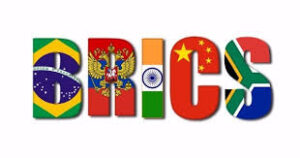
- This project has passed.
Emergence and configuration of the Indian National System of Innovation
BRICS' STATE & MARKET
Start time:
June 3, 2019 @ 1:00 pm - 2:30 pm
EDT
Location:
Online
Type:
Other

Description
Emergence and configuration of the Indian National System of Innovation: historical changes and continuities
by Manuel Gonzalo
https://www.researchgate.net/profile/Manuel_Gonzalo2
During the 2000s, Brazil, Russia, India, China and South Africa (BRICS) aroused the interest of different economic analysts because they agglomerate a large portion of the world population, a significant endowment of resources and due to its increasing relevance in the international geopolitical scenario. In this sense, India has shown the highest growth rates in terms of GDP in recent years, even higher than China. In the same way, it is projected as the most populated country in the world by the year 2030. As we have been discussing during the webinar series, most of the explanations and expectations regarding its economic dynamics focused on the role of the State. In this opportunity, we will focus on the historical construction of the Indian national system of innovation (NSI).
The configuration of the Indian NSI experienced three main phases: the pre-independence years, mainly between 1920s and 1940s, the so-called planning years, between 1950s and 1980s, and the years since the 1990s, after the implementation of the New Economic Policy. These phases have different characteristics, but they also expressed some continuities. Adopting a broad understanding on NSI, the objective of the webinar is to present and discuss these main phases, pointing out their main similarities and breaks, mainly related to the State & Market relationships, the type of explicit and implicit policies and instruments applied to the STI policymaking and the connection with the macroeconomic performance and challenges.
Suggested references
- Gonzalo, M. (2018) A long term narrative on India from Latin America: peripherization, national system of innovation and autonomous expenditures. PhD Thesis, PPGE-IE-UFRJ, April 2018. https://www.researchgate.net/publication/331652461_A_LONG-TERM_NARRATIVE_ON_INDIA_FROM_LATIN_AMERICA_PERIPHERIZATION_NATIONAL_SYSTEM_OF_INNOVATION_AND_AUTONOMOUS_EXPENDITURES
- Gonzalo, M., Possas Gomes, E., von Bochkor Podcameni, M. G. and Cassiolato, J. E. (2019) State-led Responses to the Indian Energy Challenge: Infrastructure Expenditure, Central Public Sector Enterprises and Electrification. BPC Papers,January – April/2019, Rio de Janeiro, PUC, BRICS Policy Center. ISSN: 2357-7681 http://www.bricspolicycenter.org/publicacoes/respostas-lideradas-pelo-estado-ao-desafio-da-energia-indiana/
- Joseph, K., Sarma, M. and Abraham, V. (2008), National system of innovation: India. Research Report 27/08. Rio de Janeiro, RedeSist -IE-UFRJ. http://www.redesist.ie.ufrj.br/nts/br_nsi/NIS%20Report%20India.pdf
- Nagaraj, R. (2013) India´s economic development‟. In Kohli, A. and Singh, P. (eds.). Routledge Handbook of Indian Politics. Routledge.
Hosted by Working Group(s):
Organizers
Attendees
Sergio Páez
Christopher Pomwene Shafuda
Mayank Mishra
Arpit Vakilna
Kai Erlenbusch
Jonas Gouveia de Maia
Nikhil Kumar
Ariadna Cazenave
Laura Lacaze
Manuel Gonzalo
Alexander Patlatoy
Irene Zamora
Pilar Piqué
Pablo Benchimol